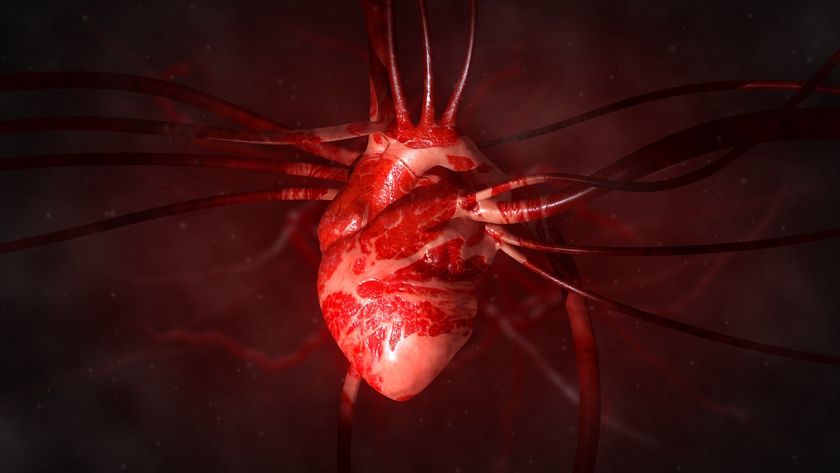Total Artificial Heart Transplanted in West Coast First
Earlier this month, surgeons at the UC San Diego Medical Center removed a patient's heart and replaced it with a new model. But unlike most transplanted hearts, the new organ was artificial.
Artificial hearts have been transplanted before, but the Jan. 7 surgery was the first of its kind on the West Coast, the UCSD Medical Center announced today (Jan. 25).
"The total artificial heart is a good device for people who are just beginning to lose the function of their kidneys, liver, intestines, lungs and brain. Patients may be near the point of organ failure but the damage is still reversible," Jack Copeland, director of cardiac transplantation and mechanical circulatory support at UCSD Health System, said in a statement. "The total artificial heart goes in and, in most cases, the patients can recover from metabolic disaster, provided they are not too advanced in age, weak, or suffering from other chronic organ disease." [Read Humans 2.0: Replacing the Mind and Body]
In this case, the patient suffered from a near-fatal heart virus in his 20s. The artificial heart was a stop-gap measure meant to keep him alive and healthy enough while he waited for a donor heart. Since the surgery, the patient has received a donor heart and is now recovering, according to UCSD.
During total artificial heart surgery, surgeons open the patient's chest and stop the heart. A heart-lung machine keeps oxygen-rich blood moving through the body while the dying heart is removed. The surgeon leaves only the upper chambers of the heart to connect to the artificial heart. When the device is attached, the surgeons switch off the heart-lung machine and the artificial heart starts pumping about 2 gallons (8 liters) of blood per minute.
"All of a sudden, the organs are pinking up and working again. It all happens before your eyes, right in the operating room," Copeland said. "It's amazing to see these patients rescued from death and brought back to life. Within days, many patients are breathing on their own. In less than two weeks, they are out of bed and walking more than 100 feet, and getting re-nourished in preparation for a heart transplant."
Copeland was the first surgeon to successfully use the artificial heart as a bridge to donor transplant, a surgery he carried out in 1985. He helped found Syncardia, the company that makes the artificial heart. He serves on the company board without compensation.
Sign up for the Live Science daily newsletter now
Get the world’s most fascinating discoveries delivered straight to your inbox.
Each year, 670,000 Americans are diagnosed with heart failure, according to the American Heart Association. About 3,100 people are on the heart transplant list at any given time, competing for one of the approximately 2,200 hearts donated each year. The total artificial heart extends the life of the patient until a match can be found. Syncardia is currently running a study on whether patients can safely leave the hospital and wait for their donor heart at home while using the artificial heart.
Approximately 80 percent of artificial heart recipients — currently more than 850 worldwide — get a permanent transplant within six months. Almost all are transplanted at the one-year mark. According to Syncardia, the longest anyone has awaited transplant on the device is more than 1,000 days "and counting."
The artificial heart procedure does carry risks, including clotting and slow healing of the chest, UCSD reported.
For patients who are running out of time, these risks may be worth it, Copeland said.
"Heart failure is a slow, insidious way to die. Basically the patient suffocates as time passes," Copeland said. "Some patients have to take small triple breaths just to take in the equivalent of one normal breath. They become malnourished because they cannot exercise. They consume their calories just trying to breathe."












